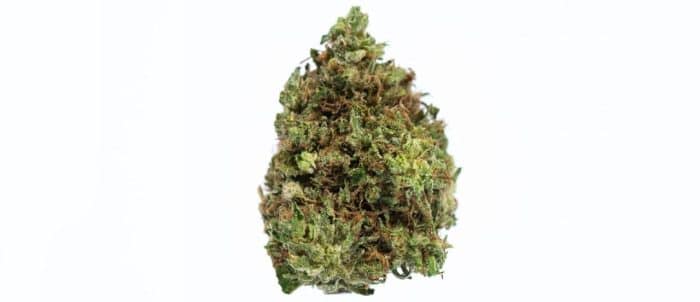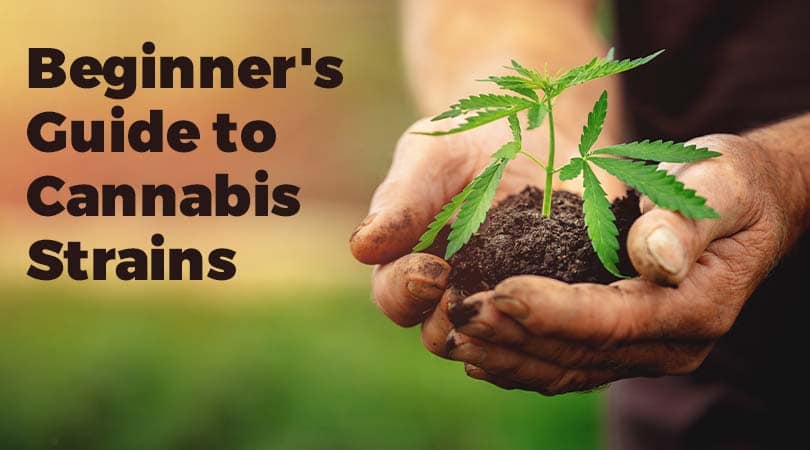Marijuana 101
Beginner’s Guide to Cannabis Strains
If you’re new to cannabis strains, the pleasant stories you may have heard about these unique plants are mostly true. However, some myths and misconceptions are misleading, especially for beginners. From the flavorful taste to their medical potential, cannabis strains owe their qualities to their environment, chemical properties, and hybridization.
Furthermore, experts predict the cannabis industry to soar past $90 billion globally in 2026. Find out more about this unique blend of crops, including some benefits you never knew they had.

Photo credit: pixabay
What are Cannabis Strains?
Any category of the genus cannabis plant in the pure or hybrid form is a cannabis strain. However, the long history of using cannabis makes it difficult to trace its true origin. For years, many believed that the Pakistani Kush region was the birthplace of cannabis. However, Science Advances recently published a research in which they traced the origins of cannabis through genetics. From this research, scientists discovered that cannabis originated from parts of China and East Asia. Also, this research proves that cannabis is one of the first crops seeded on the earth.

Photo credit: pixabay
Types of Cannabis Strains
There are two classes of cannabis strains: pure and hybrid. The original unique cannabis breeds are the pure stains, while hybrid strains are secondary species produced from the pure ones.
Pure cannabis strains
There are two major cannabis strains: cannabis Sativa and cannabis Indica. Both Sativa and Indica cannabis are similar in many ways. Firstly, they are both the primary cannabis strains from which other species came. Also, they contribute to health in various ways. So let’s learn more about them.
-
Cannabis Indica
Indica plants thrive in the Indian and Pakistani regions. They are short and stout. Furthermore, some Indica plants are only two feet tall. Due to their diminutive nature, it is easy to grow them indoors. It takes between seven and 12 weeks for Indica to mature into a flavorful and aromatic plant. In terms of intoxication, Indica is the most potent. It has more THC content than Sativa but with lower cannabinoid levels. Therefore, Cannabis Indica flowers is more suited to medical use to tackle conditions like cancer, lupus, and HIV.
-
Cannabis Sativa
Sativa is the most popular cannabis breed. If you’ve seen cannabis printings on t-shirts, it is likely a Sativa leaf. Many hybrid cannabis strains come from this unique plant. Unlike Indica, Sativa plants are usually tall. Some Sativa trees are up to 20 feet or more. Cannabis Sativa is suited for recreation, food, and industrial production. However, they have relatively thin, long branches, and it could take up to six months to cultivate them. Sativa is beneficial for creativity, pain relief, and depression management as well.
Differences between Sativa and Indica
Besides the few similarities between Sativa and Indica, they are different in many ways. From height to THC content, here are some of the ways to differentiate them:
- Height – Sativa strains are usually tall, while Indica cannabis is short and stout. Indica plants are two or three times the height of Sativa.
- Density – Sativa plants are thin, long, and less dense than short and thick Indica plants.
- THC content – Indica cannabis is richer in THC than Sativa that makes them more intoxicating.
- Bodily effect – While Sativa affects the mind, Indica affects the body more. Sativa keeps the mind awake and alert, while Indica helps to relax and sleep.
Hybrid cannabis strains
There are numerous hybrid strains from these major cannabis species. Some people refer to certain hybrid strains as pure cannabis strains. For example, the Afghanica and Ruderalis have been touted by some as pure cannabis strains. However, Afghanica and Ruderalis hybrids are shorter versions of Indica with the ability to grow in regions with harsher climates. Yet, the combination of these hybrids and pure cannabis produces some of the best hybrid strains. For example, the Rockstar strain is a product of Sensi and Rockbud hybrids.
Other common hybrid CBD flower strains are:
- Green crack
- Blue dream
- Blueberry
- Dutch treat
- Cinex
- Northern lights

Photo credit: Daily Marijuana/El Jefe Hybrid
How to consume cannabis strains?
There is more than one way to use cannabis for pleasure or medicine. If you want to enjoy the benefits of the plant through sophisticated means, keep reading:
Smoking
In the U.S., marijuana sales for recreational purposes in 2020 surpassed $11billion even though many users buy cheap buds. Smoking marijuana is so popular that other ways of using it barely come to mind. There are different ways to smoke cannabis strains. You could put them in tobacco rolling papers like cigarettes, smoke them in a bong or a pipe. If you also choose to enjoy smoking cannabis in a blunt like cigars, bon appetit.
Vaping
Cannabis strains are some of the ingredients vapers prefer in vape pens and pods. Instead of inhaling the cannabis as smoke, you would be inhaling it as vapour. This method is relatively less harmful to the lungs. Also, vaping muffle the smell of weed that can be a major turn-off.
Inhalation
Smoking cannabis involves inhalation. Yet, there is a difference when you inhale cannabis without rolling a blunt. Cannabis strains become “active” once they are heated. Thus, purposely inhaling the smell of heated cannabis can be highly effective depending on the concentration.
Ingestion by Eating
Can you eat cannabis? The answer is yes. However, don’t expect the same level of effectiveness as smoking, vaping, or inhaling weed. The effect will be different because the cannabidiol acids in raw cannabis need heat to become lively. From homemade brownies to marijuana soups, cannabis proves to be a nifty ingredient for home-cooked meals. Snacks known as edible cannabis products (edibles) like weed gummies are thriving on the market. They can be effective and tasty at the same time.

Photo credit: Daily Marijuana/Gummies
Ingestion through Drinking
Just as you can add marijuana to food, you can also pour some into a drink. Not everyone likes to smoke marijuana. It is why there are other refined options for ingesting cannabis besides chewing. Try marijuana oils. These oils mix well with all sorts of beverages. You could take it with alcohol, sodas, tea, or coffee.
Spraying
For those who take cannabis as a medicine, doctors recommend spraying cannabis. This method involves adding cannabis strains to a liquid – typically water – then spraying some under the tongue. By doing this, the user will avoid the effects of smoking and still have some cannabis in their bloodstream.
Benefits of Cannabis Strains
Relief for mental health and social anxiety challenges
It is not a mere assertion but a fact that cannabis can help manage mental health challenges. Most times, the positive effects of cannabis are temporary, yet they make a significant difference. Cannabis alleviates social anxiety. The calming sensation cannabis produces in people who deal with depression and physical pain. Also, cannabis strains help people with anxiety issues get relief from anxiety and fear.
Cancer control
It is no longer news that cancer is one of the most lethal diseases on the globe. However, clinical studies on animals show that the cannabinoid content in THC could shrink and probably eradicate cancer cells. The success of this procedure requires a high dose of cannabis. This dosage is usually higher than one which anyone could smoke at once.
Vitamins for Wholesome Food
Unless you are looking to get high, cooking with cannabis strains will not necessarily intoxicate you. Cannabis in its raw state will become “active” once the THCA converts to THC through heating. Furthermore, cannabis strains are rich in vitamins and minerals. They are rich in vitamins C and K, as well as iron and calcium. However, if you intend to get a little high from eating cannabis, it works better than smoking. Indeed, ingesting cannabis in the right proportions makes for a longer-lasting “high.”

Photo credit: pixabay
How cannabis affects the body
Cannabis has many effects on the body and mind. In most cases, the amount of cannabis you take determines how much impact it would have on you. So, regardless of the purpose of using cannabis – whether medicinal or recreational – you should know how it affects the mind and body. This information could save a life.
The effect of cannabis on the brain
The way cannabis affects the brain is somewhat contradictory. From euphoria to nightmares, the mood changes due to its effects on the brain are not always consistent. Cannabis influences the way information is received and processed. The prolonged use of cannabis can lead to the death of brain cells in the hippocampus. This brain’s portion is responsible for processing and retaining information.
Also, cannabis can lead to reduced mobility. The ability to react to information or contact also reduces after long periods of taking cannabis, especially smoking. Symptoms include slower reflexes and unsteadiness. Another way the brain gets affected by cannabis is in the production of dopamine. The THC content in cannabis triggers the high release of dopamine chemicals in the brain. It results in the feeling of euphoria, amusement, and increased sensitivity.
Lastly, using cannabis helps to reduce the effects of glaucoma. This is how it works: when you take cannabis, the pressure on the eyes reduces. In turn, the glaucoma symptoms reduce significantly, albeit temporarily.
The effect of cannabis on the thoracic cavity
The thoracic cavity in human anatomy relates to the chest area. It consists of multiple organs and tissues. These organs include the respiratory, nervous, digestive, and cardiovascular systems. Taking cannabis affects these areas in different ways. In the respiratory system, smoking cannabis affects the lungs and throat like any other smoked substance. Due to the irritation the smoke causes, the bronchial passage could be badly affected. It results in chronic bronchitis.
The effects of cannabis on the digestive system are positive. For example, cannabis consumption increases appetite and reduces nausea. People living with cancer and other terminal diseases could benefit immensely from these effects.
When it comes to the cardiovascular system, the effects of cannabis intake are tricky. Cannabis causes an almost immediate elevated heart rate, especially when smoking. But, on the other hand, smoking cannabis leads to vasodilation. It occurs when the blood vessels expand, leading to increased blood flow and reduced blood pressure.
Cannabis addiction
Although cannabis is less addictive than other drugs, including alcohol, it still is addictive. According to researchers, how frequently you use cannabis plays a crucial role in addiction. “People who tend to run into trouble are utilizing it multiple times every day. That’s how this less-harmful, less-addictive substance turns into very severe to them,” Harvard Medical School associate professor of psychiatry, Kevin Hill, said.
Furthermore, the excessive use of cannabis or marijuana can lead to marijuana use disorder. Marijuana use disorder is a type of addiction to cannabis with severe withdrawal symptoms when the user does not take it for a while.

Photo credit: pixabay
Government restrictions on Cannabis Strains
The use of cannabis has been a controversial issue for decades. Cannabis strains and cannabis-based products are widely restricted and illegal in most parts of the world. In the United States, recreational marijuana is only legal in 18 states, including D.C, and two territories. While consuming cannabis for medical use in the U.S. is legal in 36 states, four territories, and D.C.
On the other hand, Canada legalized edibles Canada for both medical and recreational purposes. Countries like Uruguay, Mexico, and Georgia legalized cannabis as well. In most parts where cannabis is legal, there are age limits to using and possessing marijuana. For example, most U.S. states and territories legalize cannabis purchase and use for medical purposes for 18-year-olds and above. For recreational use, the legal age limit is 21 in most U.S. states and 19 in most Provinces and Territories in Canada. You can even get same day delivery from services such as Weed Delivery Vancouver.
The Bottom Line
Cannabis strains are unique plant species with numerous potential and benefits, especially for malignant medical conditions, including HIV and cancer. Yet, the use of cannabis remains a controversial topic in religious affairs, sports, and healthcare. Although relatively less addictive, frequent users of cannabis run the risk of addiction. There are various types of cannabis strains to cultivate and use. Seek medical advice for the safest means of taking marijuana, especially if you are a beginner. Lastly, research the restrictions for using cannabis in your region to avoid having problems with the law.
Interesting Reads
How to Smoke a Joint, How to Make Shroom Tea, How to Make a Filter a Joint
References
- https://www.globenewswire.com/news-release/2021/02/18/2177949/0/en/The-Worldwide-Cannabis-Industry-is-Projected-to-Reach-90-4-Billion-by-2026.html
- https://advances.sciencemag.org/lookup/doi/10.1126/sciadv.abg2286
- https://www.ncbi.nlm.nih.gov/pmc/articles/PMC2372636/
- https://www.statista.com/statistics/614271/us-recreational-use-cannabis-market-sales/
- https://www.cancer.gov/about-cancer/treatment/cam/hp/cannabis-pdq#link/_7
- https://www.drugabuse.gov/publications/research-reports/marijuana/how-does-marijuana-produce-its-effects#:~:text=Like%20most%20other%20drugs%20that,response%20to%20natural%20rewarding%20stimuli.
- https://www.lung.org/quit-smoking/smoking-facts/health-effects/marijuana-and-lung-health#:~:text=Research%20shows%20that%20smoking%20marijuana,production%2C%20wheeze%20and%20acute%20bronchitis.
- https://www.drugabuse.gov/publications/media-guide/science-drug-use-addiction-basics
- https://news.harvard.edu/gazette/story/2020/02/professor-explores-marijuanas-safe-use-and-addiction/

